High voltage ignition coils mounted directly on the spark plugs
If the engine is hard to start, stalls or runs erratically, spark plugs may be the cause of these problems, even if they look perfect.
Optimum operation of the engine during its operation depends on the choice of the correct and reliable spark plug.
An important criterion in choosing a spark plug when buying it is the heating range, which characterizes the amount of heat that the spark plug can conduct through itself to the cylinder head (glow number).
When the electrodes and insulator overheat, premature (glow) ignition occurs.
In other words, if the spark plug is too "hot", it will not be able to cool enough before the next portion of the air-fuel mixture enters the cylinder.
As a result, glow ignition will occur - the ignition of the mixture is not from a spark, but from contact with the heated parts of the candle.
The glow rating of the selected plug must strictly correspond to the value recommended for your engine.
It is allowed to use candles with a slightly higher glow number for a short time, but it is strictly forbidden to use candles with a lower value, as this can lead to the most serious consequences, up to breakdown of the cylinder head gasket, burnout of pistons, valves, etc.
If the spark plug is too cold, carbon deposits will foul the spark plug electrodes and insulator.
This failure will cause a spark to leak through the insulator, from the center electrode to the skirt of the spark plug insulator.
Such a malfunction leads to misfires, i.e. the air-fuel mixture does not ignite and, as a result, to uneven engine idling, jerks and dips during acceleration, problems with starting the engine in winter and increased fuel consumption.
Prolonged operation of a vehicle with systematic misfires and, therefore, an incompletely combustible air-fuel mixture leads to a decrease in engine power, increased fuel consumption, catalytic converter failure, reduced environmental safety of the vehicle, increased oxidation of engine oil and damage to the vehicle transmission.
To complete the task, you will need a socket head for 10 or 8 and a special key for spark plugs for 16.
We perform work on a cold engine.

Press the lock of the wire block, disconnect the block from the ignition coil
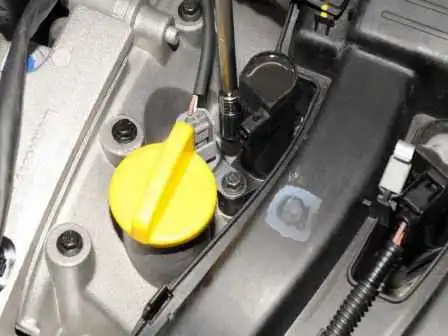
Unscrew the ignition coil bolt
On the F4R engine, the fourth cylinder ignition coil and variable valve timing solenoid valve are fixed with one bolt.
Before unscrewing the spark plugs, blow out the spark plug wells with compressed air to remove dirt and dust from the spark plug wells.
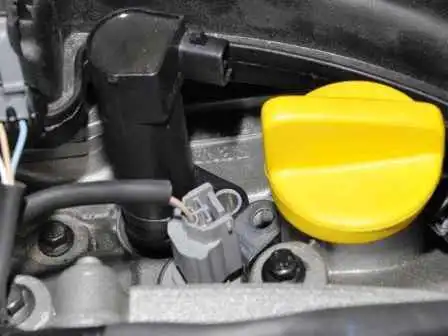
Turn the valve of the phase change system, releasing the coil flange
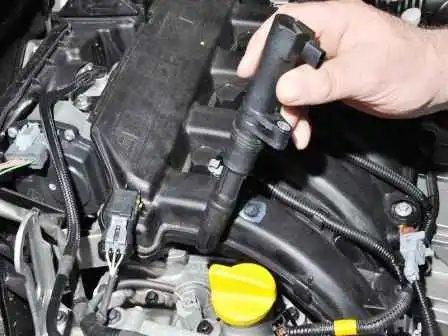
Removing the ignition coils

Unscrew the spark plugs with a candle wrench
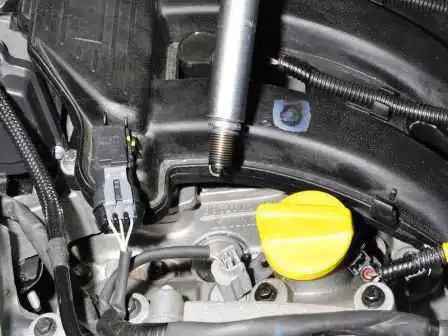
Remove the candles from the candle well
We examine the candles and evaluate their condition.
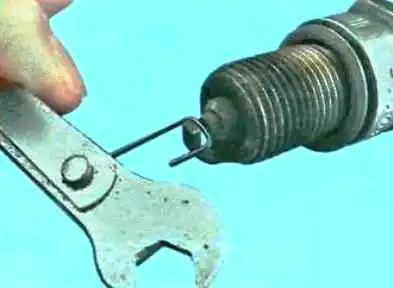
Checking the gap between the electrodes of the candles with a probe.
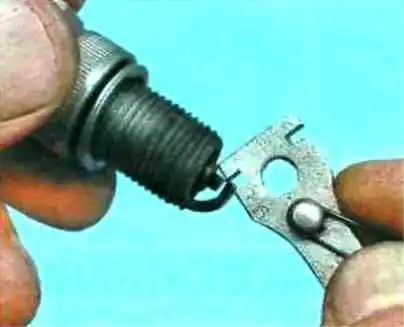
For the K4M engine, EYQUEM RFN58LZ, CHAMPION RYCLC87 spark plugs are used - a gap of 0.95 ± 0.05 mm.
For F4R CHAMPION RC87YCL engine - gap 0.9±0.05 mm, NGK PFR6G-9 - gap 0.85±0.05 mm.
If the gap does not match, bend the side electrode.
When installing candles, we screw them first by hand (without a knob), and then tighten with a torque of 25-30 Nm.
Tightening the spark plugs too hard can break the threads in the spark plug holes in the cylinder head.
We apply a special compound Fluostar 2L to the inner surface of the tips of the ignition coils.





